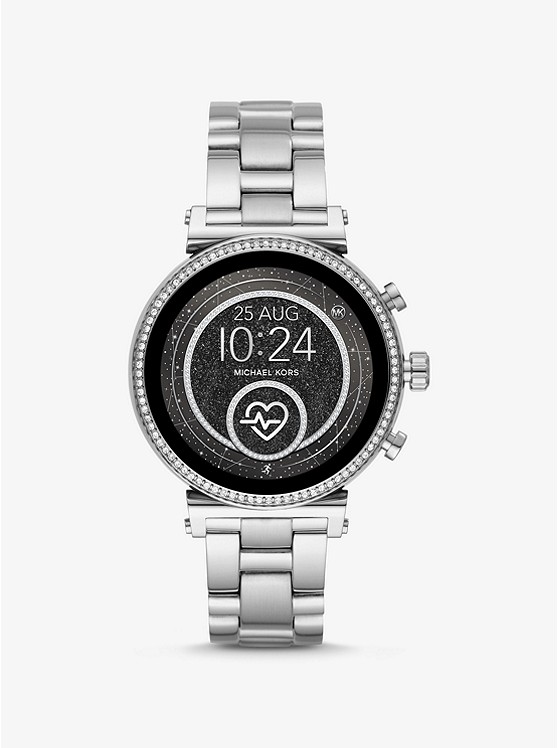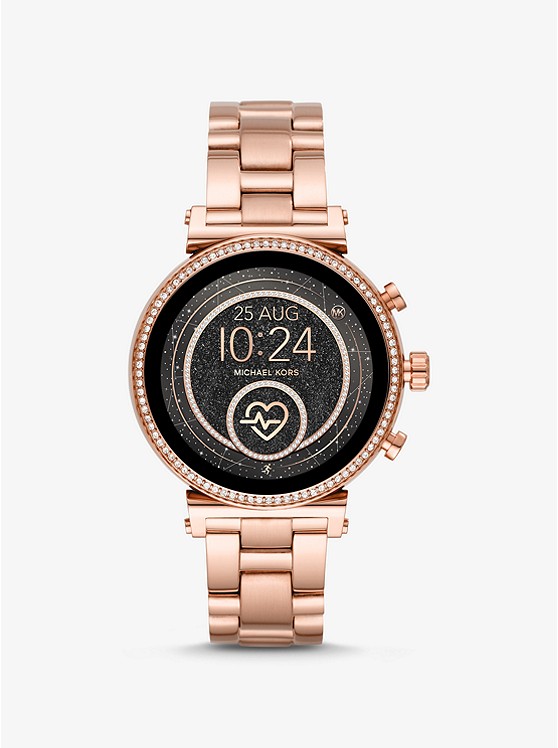Michael Kors announced a refresh of the Sofie smartwatch, boasting a number of great new features in a nice-looking device. Unfortunately, the device also has some decidedly outdated features — like the fact that it still includes the 2016 Qualcomm Snapdragon Wear 2100, instead of the newer Qualcomm Snapdragon Wear 3100.
The original Michael Kors Access Sofie smartwatch first launched in 2017 and while it looked good, it lacked some of the features other smartwatches were getting. Now, however, it has finally added some of those new features.
For starters, the Sofie (2019) now has GPS and a heart rate monitor, which makes it much more capable when it comes to fitness tracking. The heart rate monitor works perfectly with Google Fit, though it can also be used by other Wear OS fitness-tracking apps too. The device also now has NFC, meaning that you can use your watch to pay for things through Google Pay.
The updates aren’t all internal. The Michael Kors Access Sofie now also offers two extra buttons on the wide of the device, which can be used to quickly open apps or enable other shortcuts. The watch is available in silver, gold, rose gold, and some two-tone mixtures of those colors.
Wear OS watches in general offer other features, too. You can talk to Google Assistant on your device, giving you the ability to control smart home devices, find out information from the web, and so on.
Of course, it is pretty disappointing to see the device without the Snapdragon Wear 3100. Michael Kors and some other Fossil brands have been a little slow to adopt the latest processor, highlighting that these watches are more for the fashion-conscious rather than those that care about performance. Unfortunately, there are plenty of people that care about performance and fashion — not to mention the fact that a faster processor means that a smartwatch will last longer as new apps get released and performance demands get higher.
The new Michael Kors Access Sofie smartwatch is now available from the Michael Kors website and is available for $325, though that price will depend on the watch band that you purchase.
Editors' Recommendations
- Fossil will bring its Gen 5 LTE smartwatch to more carriers and countries soon
- Tag Heuer reimagines its beautiful, $1,800 WearOS smartwatch for 2020
- Oppo sees a smartwatch, a chip, and an under-screen camera as part of its future
- Michael Kors’ three new Wear OS smartwatches are stylish and heavy on features
- Fossil is preparing 5 new designer smartwatches, and we can’t wait to see them





